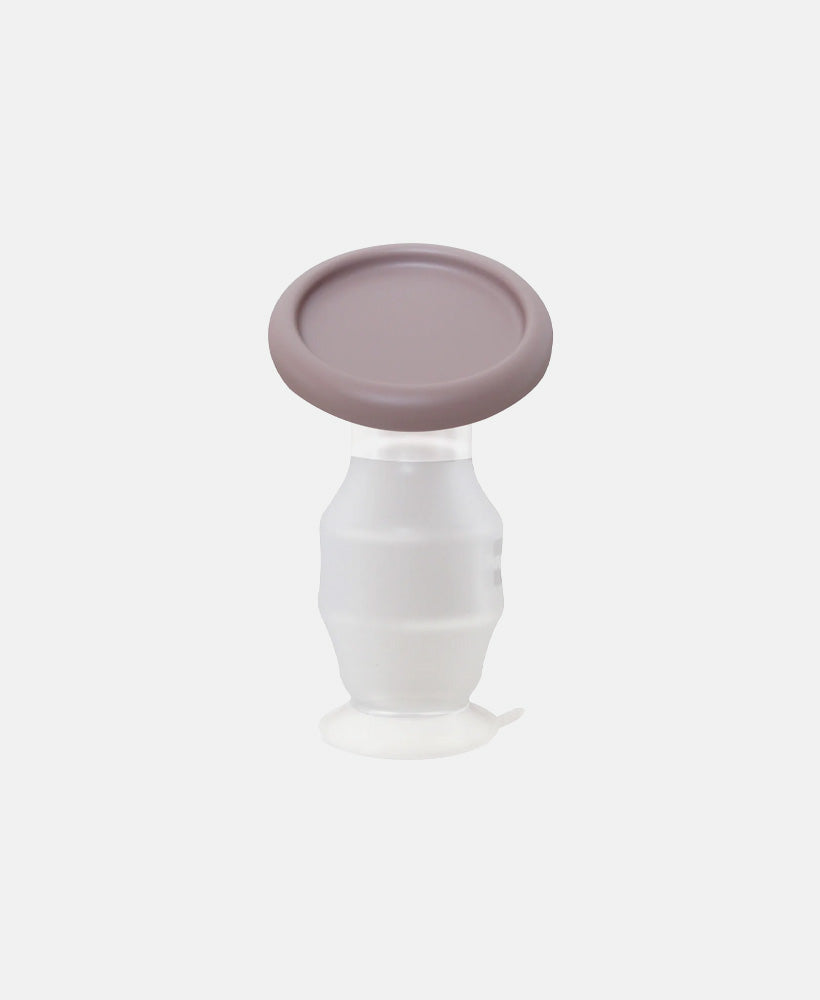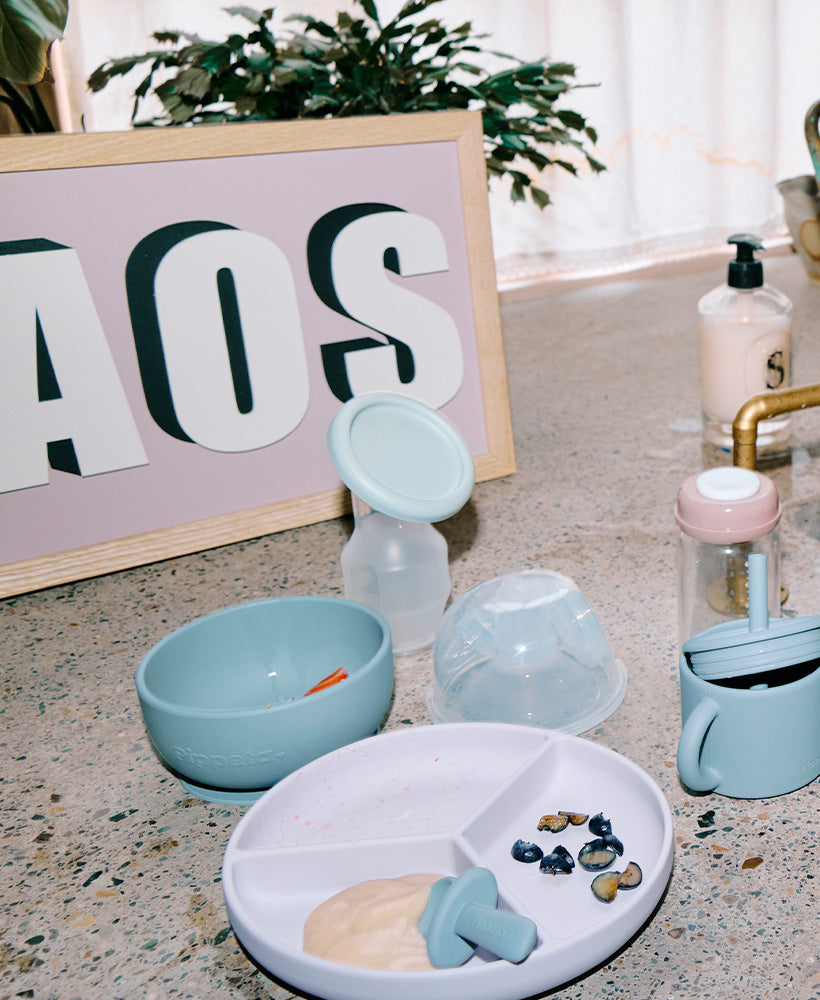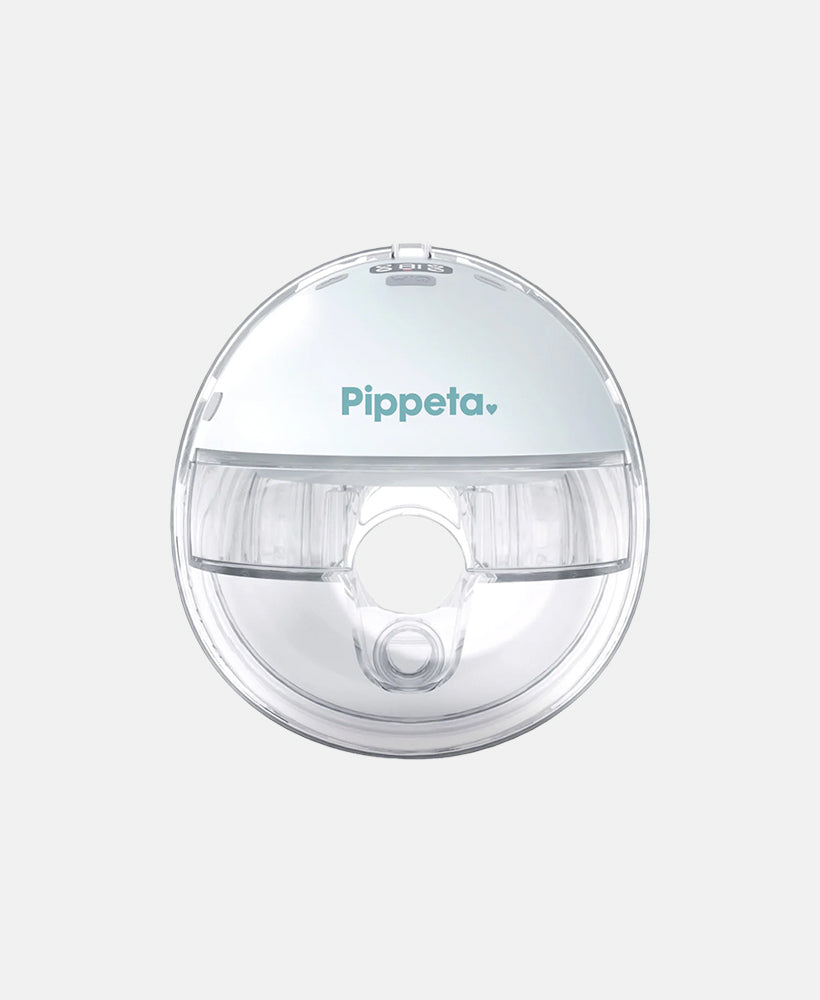Is It Safe to Harvest Colostrum Before Birth? Myths, Facts & Expert Tips
By Pippeta Staff


"Colostrum is a kind of insurance policy in case baby needs additional milk when they are born"
- Victoria Pearcy International Board Certified Lactation Consultant (IBCLC) co author.
What is Colostrum?
We’ve all seen the hype on TikTok, haven’t we? Mammas proudly sharing their syringes filled with golden colostrum, ready and waiting for baby’s arrival. If you’ve landed on this blog, chances are you’re already thinking ahead about your baby’s feeding journey , maybe even considering breastfeeding. And for that, we’re so proud of you, Mamma.
Whether this is your first time or you’ve done this before, choosing to learn about colostrum harvesting shows you’re already giving your little one the very best start.
Let’s break it all down, what colostrum actually is, why it’s so powerful, and some top tips on how you can start collecting it if you choose to.
So, what is colostrum? Colostrum is often called “liquid gold” and for good reason. It’s the very first milk your body produces, from as early as when you're 16 weeks pregnant, packed full of everything your baby needs in those first precious days.
This golden goodness is rich in antibodies that help protect your baby from infections and support their developing immune system. It also gently gets their digestive system ready for the outside world, helping to reduce the risk of allergies later on.
And bonus benefit: colostrum helps your baby have their first poo (called meconium) and clear out any excess bilirubin which can help prevent jaundice.
Because your baby’s tummy is tiny at birth (about the size of a marble!), just a few drops of colostrum is enough to give them everything they need in those early moments.
But while colostrum is truly incredible, there are still a lot of myths floating around, so let’s clear a few things up before you start your harvesting journey.
Colostrum Harvesting: Myths vs Facts
Myth 1: You shouldn’t express colostrum before birth it might start labour.
This isn't necessarily true. Antenatal colostrum harvesting has been shown to be safe from 36 weeks onwards, in uncomplicated pregnancies. However, our expert here at Pippeta always suggests it is safe to check with your midwife or consultant first especially if you have a high-risk pregnancy or history of preterm labour.
Myth 2: If you can’t express colostrum, your milk won’t come in.
Not being able to collect colostrum before birth doesn’t mean you won’t produce enough milk later on. It’s not a predictor of milk supply at all and most women will only be able to express an average of 0.5ml of colostrum prior to birth which again isn't an indicator of what your milk supply will be like once your milk comes in.
Myth 3: You need to collect a lot for it to be useful.
The facts are even a few drops of colostrum can be incredibly beneficial, especially if your baby needs extra support after birth such as extra milk to support with low blood sugar or delayed latching.
Myth 4: Only people with gestational diabetes or high-risk pregnancies should harvest colostrum.
So let's discuss this myth. While it’s especially encouraged for those groups, anyone can benefit from having a small stash of colostrum ready as what our expert calls "an insurance policy incase baby needs additional milk when they are born". This is also a skill that prepares your breasts for those early days of feeding so focus on technique and gentle stimulation of the breast and if you get any drops, then thats a bonus!
Myth 5: You must use a breast pump to harvest colostrum.
Even though we are a pump brand we aren't going to lie to you and tell you, you have to use a pump to harvest your colostrum. In fact, Hand expression is usually the recommended method for colostrum harvesting. It’s gentler and more effective for small volumes than a breast pump as your hands slowly move the sticky colostrum down an out of the nipple pores.
Post birth our pumps are designed to passively collect your milk if you're leaking for which something like our manual milk collector would be sufficient.
The handsfree breast pumps are great for those with over supply, combi-feeding, those returning to work and wanting to build a stash for home feeding and for busy mums on the go wanting to share the feeding load.
Pippeta's Expert Tips for Harvesting Colostrum
Don't Focus on Volume
Our experts top tip is to ensure you do not put too much pressure on yourself and over focus on the volume of colostrum that you express pre birth as previously mentioned the normal volume is usually around 0.5ml that can be saved in a syringe and stored until baby arrives. There truly is no “perfect” amount to collect, and every mum’s journey looks different. So don't be comparing yourself to what you see on social media or how much your Mamma friend has collected, what matters is that you’re getting that practice in and getting the skills you need for a successful feeding journey.
How to Harvest Colostrum: A Guide
You are probably reading this blog as you have already considered harvesting your colostrum so let's dive in to the how and make sure you are fully prepared to get the most out of it.
What You’ll Need
Before you begin, have a clean, spoon or cup and a sterilised syringe ready to collect your drops of liquid gold. It’s also handy to have a sterilised container nearby in case you need to decant however this is rare.
Getting everything prepped ahead of time should help you feel calm and in control.
Set the Scene
Comfort is key. Try expressing in a warm shower or after a bath when you're already relaxed. A warm flannel or gentle breast strokes can help stimulate the flow. Take a few deep breaths. You’ve got this Mamma.
Hand Expression Technique
- Wash your hands with hot soapy water and make sure any cups or spoons you use to collect your colostrum are washed and cleaned inn hot soapy water too.
- Gently cup your breast using a 'c' shape with your hand: thumb on top, fingers underneath, about 2–3cm from the base of your nipple.
- Gently press back towards your chest, then squeeze and release in a steady rhythm.
- Colostrum comes drop by drop, especially at first. Try adjusting your finger placement until you find the spot that works best for you.
It’s not supposed to hurt, so if you’re feeling discomfort, ease up a little or try a different angle.
Collecting Your Colostrum
As those beautiful drops of liquid gold appear, catch them in your sterilised syringe. If it fills up, you can decant it into your clean container and carry on. Even the tiniest amount is amazing colostrum is incredibly rich and concentrated.
When the flow slows down, move your fingers around to a different part of the breast and repeat. Then switch to your other breast and go again.
How Often Should You Try
We would normally suggest a couple of times a day for around 10 minutes.
Storing Your Liquid Gold
Once you’ve expressed your colostrum, it’s important to store it safely so it stays fresh and ready for baby when you need it.
- Label each syringe or container clearly with your name (this is important for when you get to the hospital), plus the date and time you expressed. You can also use your hospital stickers you may find these in the back of your maternity notes.
- Pop your syringe into a clean, re-sealable food bag or in your storage bags/bottles and place it in the freezer at -18°C as soon as you can.
- If you don't intend on freezing your stash straight away, you can store it in the back of the fridge (2–4°C) for up to 24 hours before freezing.
- Please note, fresh milk stored in the fridge (not previously frozen) should be used within 5 days.
- Previously frozen colostrum can be can be defrosted in the fridge and must be used within 24 hours of thawing.
- If you need to defrost it quickly, then you can run the container under warm water or let it stand in a container of warm water.
When it’s time to meet your little one, you can bring your frozen colostrum with you to hospital. Here’s what you’ll need:
- Re-sealable/ zip lock food bags
- A small cooler bag
- Ice Blocks
On the day, take your labelled frozen syringes, pop them inside your re-sealable food bag, and place it in your cooler bag between the ice blocks to keep it safe and frozen on the journey.
A Gentle Note on Safety
As mentioned earlier, colostrum harvesting is considered generally safe in healthy pregnancies and is even encouraged by many healthcare professionals.
However, if you start to feel period-like cramps or anything that feels like early labour, it's best to pause, rest, and try again later if you're feeling comfortable. And as always, if you're unsure or have concerns, speak to your midwife or consultant for reassurance and guidance.
Will I Definitely Use My Colostrum?
In a perfect world, you don't need to and that’s completely fine. The colostrum you collect during pregnancy might not be needed after birth, especially if breastfeeding gets off to a smooth start. But in some cases, having colostrum ready can be really helpful, like if your baby struggles with latching in the early hours, or if they need help regulating their blood sugar levels. Your midwife or hospital team should always guide you through when and how to use it.
If you do need to use it, remember you want to do this only if you can't hand express enough after birth. Giving harvested colostrum isn't a replacement to good milk removal post birth. If your baby is not getting enough directly from you, then ask for help to stimulate your breasts to help your milk come in, until your baby can return to the breast.
Even if you don’t end up using it straight away, some parents like to save frozen colostrum for later, adding it to feeds when baby is feeling unwell, or even using it in a milk bath. Just keep in mind, the amounts you collect antenatally are usually small, so it’s totally okay if it’s not enough for something like a full milk bath.
At Pippeta, we believe that the real win of colostrum harvesting is the practice. It’s a brilliant way to get familiar with your body, build your confidence, and help prepare your breasts for breastfeeding once baby arrives.
Good Luck Mammas!
Further Reading
Collecting Colostrum (First milk) for your baby: https://www.stw-healthiertogether.nhs.uk/pregnant-women/after-you-have-had-your-baby/collecting-colostrum-first-milk-your-baby
Expressing your milk before your baby arrives: https://abm.me.uk/breastfeeding-information/antenatal-expression-colostrum/
Antenatal
Expression of Colostrum: https://laleche.org.uk/antenatal-expression-of-colostrum/
Video of a real mum harvesting colostrum:
https://www.youtube.com/watch?v=NAnXZ3Ts4f8
* Important *
This article should not be construed as medical advice. Information found online should always be discussed with your own IBCLC lactation consultant and doctor to ensure it is appropriate for you and your baby's situation. Contact your doctor, paediatrician or health care provider with any concerns about your baby's health and welfare.































